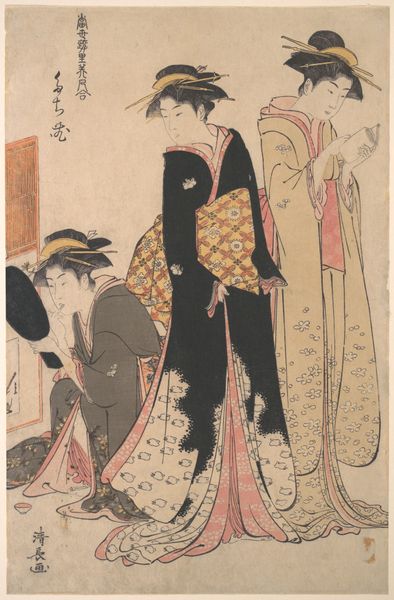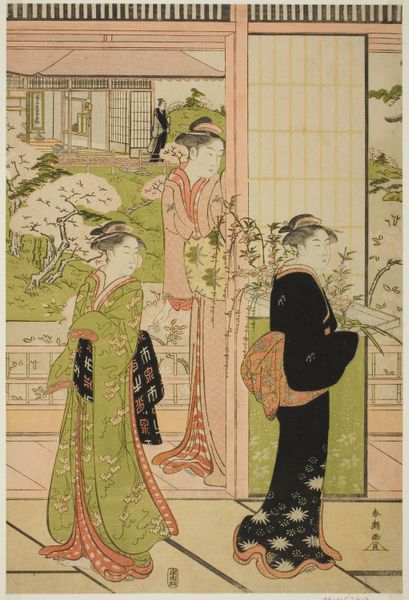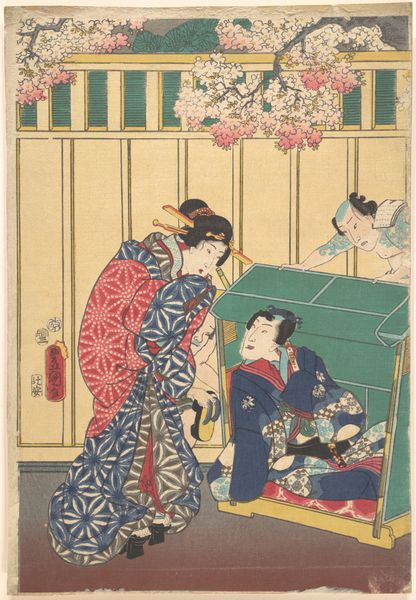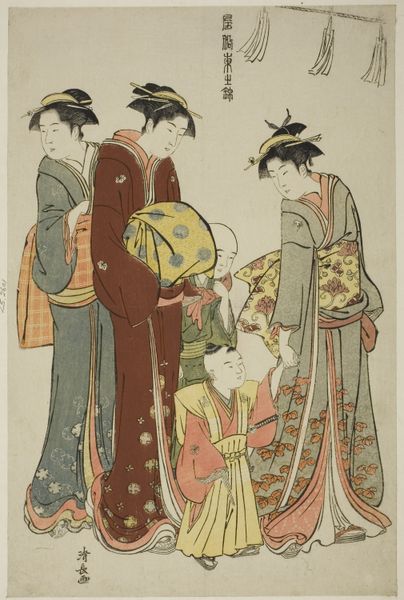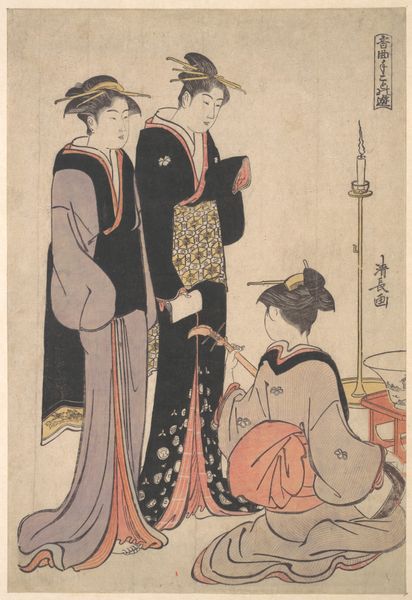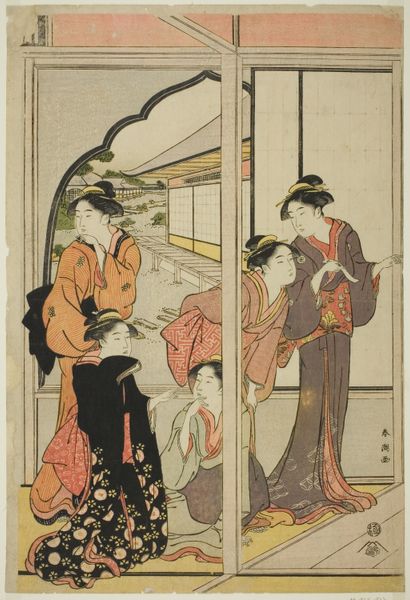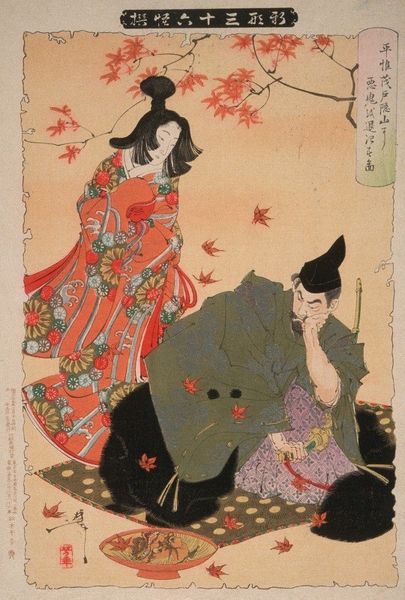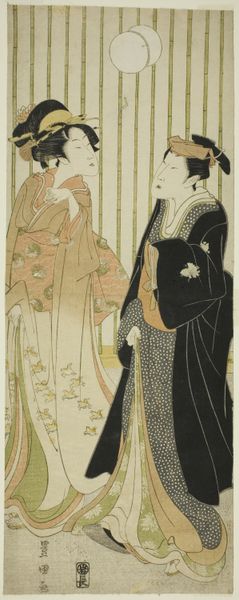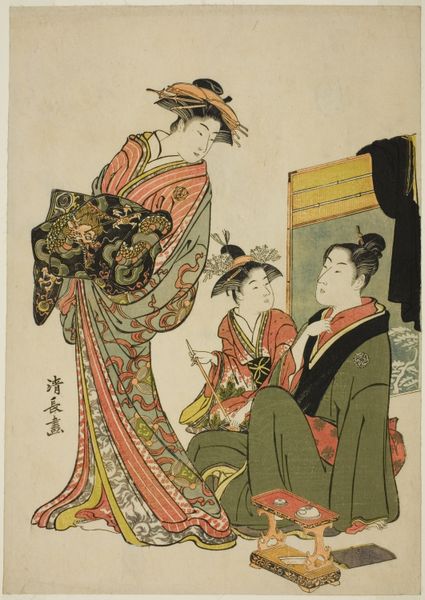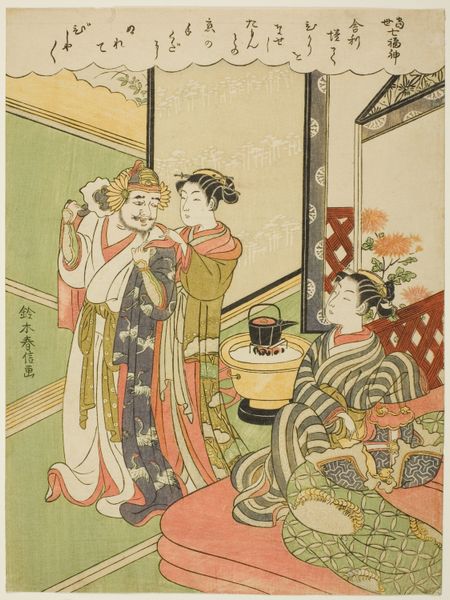
Flowers of the Doteshita District (Dotebana), from the series "A Collection of Contemporary Beauties of the Pleasure Quarters (Tosei yuri bijin awase)" c. 1783
0:00
0:00
#
portrait
# print
#
asian-art
#
caricature
#
ukiyo-e
#
genre-painting
Dimensions: 38.0 × 25.3 cm
Copyright: Public Domain
Curator: Let's discuss "Flowers of the Doteshita District (Dotebana), from the series "A Collection of Contemporary Beauties of the Pleasure Quarters (Tosei yuri bijin awase)," a print by Torii Kiyonaga, created around 1783. Editor: My first impression is how gracefully stylized and yet subdued it feels. The colours are muted, almost whispering, and the women seem caught in a very intimate moment of quiet exchange. Curator: It's fascinating to consider how prints like these were produced. Ukiyo-e prints were a collaboration between the artist, the woodblock carver, and the printer. Think about the labor involved, the multiple blocks for each color, the skill in registration to create these subtle gradations! The materiality itself tells a story about the economics and artistry of the time. Editor: Absolutely. We see not just the beauty of the courtesans but also the complex social structures within the pleasure quarters of Edo society. Each figure here embodies nuanced social power dynamics and constraints placed upon women of the period. Curator: Kiyonaga excelled at capturing the fashions of the era; look at the elegant patterns and expertly rendered textures of their robes, the sophisticated hairstyles and ornamentation. These details offer a window into the material culture of 18th-century Japan and their consumption habits. Editor: And even the way they are positioned in relation to each other subtly reinforces these power dynamics. Notice the slightly raised head of the central figure. There is definitely a hierarchy at play. I wonder too how these prints may have affected women outside the pleasure district by informing and forming new cultural ideas? Curator: A point well-made! By understanding ukiyo-e’s methods and markets, and questioning aesthetic hierarchies, we get beyond a simple reading of beauty. It highlights that aesthetic pleasure often hides the reality of intense, collective and specialist labour. Editor: For me, Kiyonaga’s piece serves as a reminder to continuously excavate beneath aesthetic conventions, considering gender and class power struggles that inform social expression during any period in art history. Curator: Indeed, that makes it so powerful! Editor: Agreed.
Comments
No comments
Be the first to comment and join the conversation on the ultimate creative platform.
